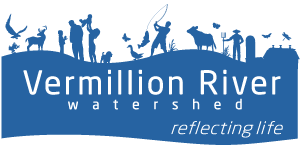Braun Wetland Restoration: Maintaining wetlands with credits
More than half of Minnesota’s wetlands have disappeared since the mid-1880s. Most were drained for farmland, residential and business development, and road expansions. In some cases, draining or filling a wetland is unavoidable. The Vermillion River Watershed Management Plan includes a sub-goal to “protect, enhance, and restore wetlands” under Goal A: Protect or restore water quality in lakes, streams, and wetlands.
One way to lessen the impact of wetland loss is by restoring a wetland elsewhere to offset the loss, creating a wetland bank. The Braun wetland restoration provides wetland bank credits that can be applied toward a future project in the watershed where wetland acreage is lost. This approach ensures wetland replacement occurs within the watershed. This particular restoration could establish about 100 acres of wetland bank credits within the Vermillion River Watershed.
The Braun wetland restoration project includes 117 acres of shallow marsh, wet meadow, and shrub type wetlands. The wetland was restored by severing over 17 miles of subsurface drain tile, removing a lift station that pumped groundwater from the drain tile to a tributary stream, plugging surface water ditches and reseeding with native wetland species. These changes will restore the hydrology of the wetland that has been drained since the 1970s and sustain native wetland plant communities long-term. The restoration also results in improved water quality in the Vermillion River by reducing and slowing stormwater runoff flow and treating nitrate.


